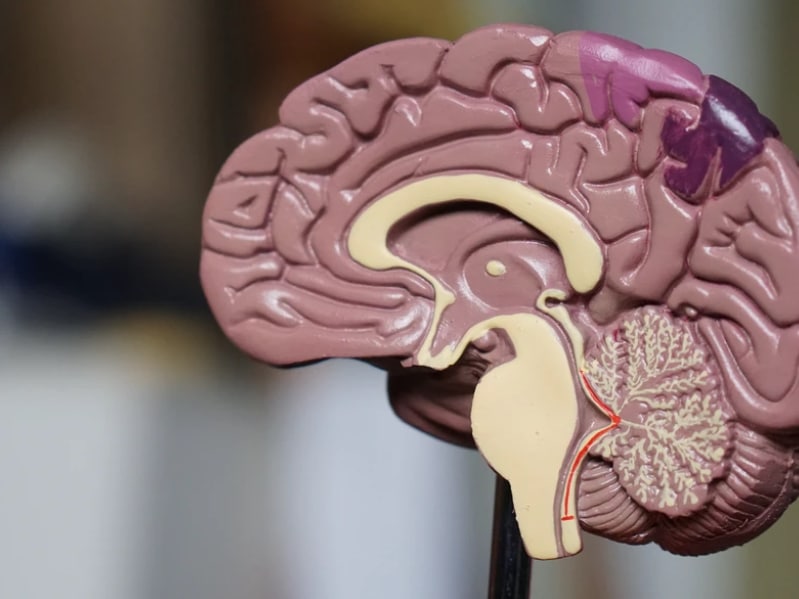Have you ever tried to learn a new skill in adulthood? While it’s a little harder than in childhood, it’s not impossible, and we have neuroplasticity to thank for that. But what are some more practical examples of neuroplasticity? And can we harness the adaptive power of our brains to live a happier life?
Neuroplasticity refers to the brain’s ability to form new connections between neurons. And as the brain changes, the mind changes, for better or for worse. There are a lot of interesting studies that have worked out the mechanism of neuroplasticity. For example, by practicing positive thoughts, you can train your brain to be more optimistic. It may not be as easy as it sounds, but the results are worth it.
In this article, I’ll take a look at what neuroplasticity is, some specific examples of neuroplasticity, and how you can harness your brain to live a happier life.
What is neuroplasticity exactly?
According to professor Joyce Shaffer, neuroplasticity can be summarized as:
The natural tendency of the brain architecture to shift in negative or positive directions in response to intrinsic and extrinsic influences.
In other words, our brains aren’t passive information-processing machines, but rather complex systems that are always changing based on our life experiences. Humans are highly adaptable to a wide range of situations and it’s all thanks to neuroplasticity.
Think of a time when you have learned something new. By learning to solve quadratic equations or play the guitar, you have forced your brain to create new connections between tens of thousands – if not millions – of neurons.
These 4 studies show some specific neuroplasticity examples
You don’t just have to take my word for it, because we have the science to back it up.
A famous study from 2000 showed that London taxi drivers, who had to memorize a complicated and labyrinthine map of the city, had a larger hippocampus than the control group. The hippocampus is a part of the brain that’s involved in spatial memory, so it makes sense that it was more developed in taxi drivers, who had to navigate from memory.
Here’s an even more drastic example of neuroplasticity:
A 2013 article describes a young man known as EB, who has learned to live with only the right half of his brain after a tumor surgery in childhood. Brain functions related to language are usually localized in the left hemisphere, but it seems that in EB’s case, the right hemisphere has taken over these functions, allowing EB to have almost full command over language.
If neuroplasticity allows one half of the brain to take over the others’ functions, there is no reason why it couldn’t make you happier.
However, it’s important to note that if the brain can change for the better, it can also change for the worse.
For example, a 2014 study reports that chronic insomnia is associated with neural atrophy in the hippocampus. According to an article from 2017, neuroplasticity induced by stress and other negative stimuli plays a role in the development of depression.
How neuroplasticity can make you happier
A part of making neuroplasticity work for you – not against you – is to focus on the positives. Let’s take a look at some examples and tips on how to harness the power of neuroplasticity.
1. Sleep and move
It starts with the basics. How happy do you usually feel after a sleepless night? As we learned before, chronic insomnia can change your brain for the worse, while adequate sleep will promote neuroplasticity and neurogenesis – the creation of new neurons.
Exercise is just as important as proper sleep. Not only does it make you happier in general, but it is also associated with increased neurogenesis and can protect the elderly against cognitive losses.
Promoting positive neuroplasticity, sleep, and exercise will keep you healthy and happy. So the next time you’re staying up late for a Netflix marathon, choose sleep instead. The shows will not of anywhere, but your much-needed neurons might.
2. Learning new things
Novelty and challenge are essential for human development and maintaining cognitive functions. Even if you prefer to mostly stay in your comfort zone, you’re still looking for something new and interesting, even if it’s just a new book or show.
Again, think about the last time you learned something new. While it might have felt uncomfortable at first, getting the hang of it probably felt pretty good. The more you practice, the better you get at it and the novelty wears off, but the satisfaction of having mastered it stays.
For example, I have recently started to learn how to solve the Rubik’s cube. I’m a long way from speedcubing, but I’ve cracked the basic algorithms and can solve the first two levels of the cube on my own. Understanding the algorithms was a real breakthrough for me; I’m no longer randomly twisting the sides around or following an online tutorial.
I couldn’t have acquired this new skill without neuroplasticity.
Will knowing how to solve a Rubik’s cube make me happy? No. But knowing that I can learn anything I set my mind to does. And if I can do it, so can you.
3. You find what you search for
A couple of years ago I read a comparison that went something like this:
Focusing on the negatives and expecting positives is like searching for ABBA and getting angry when all you get is Waterloo and Super Trouper.
It’s almost certainly not the actual quote and I couldn’t find the source – only ABBA songs – but the idea holds up. We get what we search for both online and in our minds.
The effects of neuroplasticity aren’t only limited to new skills. Our neural connections determine how we see the world. If we’re used to focusing on the negatives, we will notice them faster. If we’re used to find problems, we’ll find more problems instead of solutions.
Luckily, rewiring your brain is simple: you have to consciously start focusing on the good and do it until seeing solutions instead of problems becomes an automatic process.
A great way to change your thinking is by keeping a gratitude journal. Over time and with practice, the old neural pathways are replaced by new ones. Trying to find just one positive thing each day may be enough to sway your attention toward the positives in general.
4. Meditation
Studies on Tibetan monks, who spend thousands of hours meditating, have shown physical changes in their brains. Specifically, the monks showed more activation in brain areas related to engaging attention and attentional orienting, and less activation in areas associated with emotional reactivity.
I don’t know about you, but I definitely have days when I wish to be less emotionally reactive and more attentive.
A 2018 study showed increased neuroplasticity and decreased severity of depressive symptoms in people practicing a meditation- and yoga-based lifestyle.
Meditation promotes mindfulness, which in turn promotes calmness and happiness.
Wrapping up
Our brains are marvelous, complex systems that are created for maximum adaptation. Our neurons are constantly making new connections which not only allows us to make full recovery from brain injuries and surgeries, but also helps us be happier. To harness the power of neuroplasticity, make sure you get enough sleep and exercise, find new challenges, change your perspective and try meditation, and you’ll be on your way to a healthy brain and happier life.
What do you think? Do you believe in the power of change through neuroplasticity? Do you believe that you can change the way your brain works to eventually become happier? I’d love to hear about it in the comments below!

